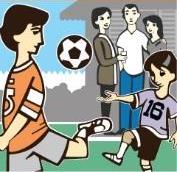
Where Did All the Liberal Votes Go in the Ontario Election?
No one expected the Liberals to perform well in this election—including the Liberals themselves—the real question was always going to be where their disaffected voters would go. Now, with the election in the rear view mirror we know the answer and it’s extraordinary.
From a popular vote perspective only 19% of Ontarians voted Liberal in the recent provincial election, down from 38% in 2014. In absolute terms, that works out to a drop of roughly 1 million voters. So where did they go? By breaking down the vote by segment and by examining which parties those groups typically support we start to get an answer.
View a breakdown of the vote by segment below.
To understand how much of the vote shifted to the winning Ontario Progressive Conservatives, we benchmarked it against share of voters by segment who voted PC in the past. This gives us the means to measure how effective Doug Ford and the PCs were at attracting those disaffected voters relative to the last provincial election. A benchmark of 100 means no change voter sentiment, while a number above 100 indicates the PCs attracted more voters than expected.
Liberal Vote
The biggest drop in Liberal support occurred in the PC and NDP strongholds—Blue Ontario and Orange Heartland segments—where they lost 56% and 54% of their support respectively. While it’s no surprise Blue Ontario won over Liberal voters, the fact the NDP weren’t as effective at wooing Liberal voters in the Orange Heartland was unexpected (more on that in a moment).
The Liberals performed relatively better with the affluent vote (Urban Affluence), losing only 43% of their support in those areas. The highest concentrations of this voter group are found in Toronto and Ottawa, which is partly why the Liberals were able to hang on to a few seats in those cities.
Multicultural Families and the Red Core are two other segments that traditionally offer strong levels of support for the Liberals. And yet even amongst these voters, Liberal support fell 47% and 48% respectively, which was only marginally better than the 50% drop in support they saw province-wide.
PC Vote
If the voters who bled away from Liberals in the Orange Heartland were split evenly between the PCs and NDP, the election map would have been a little less blue. That didn’t happen. Despite the Orange Heartland being a key NDP voting segment, many of the disaffected Liberals threw their support to the PCs instead.
While the NDP earned the largest share of voters from this segment, taking 42% of the popular vote from these segments versus 37% for the PCs, had the two parties evenly split the disaffected Liberal votes it could have changed the electoral map. Had that happened the NDP would have likely won 45% of the vote in these area overall, while the PCs would have captured 32% of those votes). Given the meek gains, the NDP might want to watch their backs in their traditional stronghold ridings for a new competitor.
It wasn’t all good news for the PCs, however. The winning party wasn’t as effective as expected in drawing the Urban Affluence vote. They were clearly the second-favourite party in 2014 (37% of the vote) and were far ahead of the NDP (13%). In this recent election, the PCs only saw their support grow by five percentage points to 42%, while the NDP gained 14 percentage points to 27%. So while the PCs won the most votes from this segment, given how much they underperformed (eight percentage points below expectations) and considering the Liberals held these votes better than in other segments, I think the Urban Affluence embrace of Doug Ford’s PCs could be described as somewhat tepid.
In this latest election the suburban ethnic enclaves of Multicultural Families embraced the PCs, but as recent as the 2014 election, voter support for both the PCs and NDP from this segment was split fairly evenly (26% to 22% respectively).
While Chinese & East Asian segments tend to prefer PCs as their second choice, while many South Asian segments see the NDP as their second choice. In this election, the PCs were effective in drawing a larger-than-expected share of disaffected Liberal votes, making them the clear popular vote leaders. This explains why two of the five Brampton ridings and four of six Scarborough ridings (which all have large numbers of this segment) went PC when many projections were calling for an NDP sweep of Brampton and a stronger performance in Scarborough than what happened.
The next election may be years away, but the political calculus for the next campaign begins in earnest—just enough time for all of the parties to study these results and refine their message to voters.
Voter Breakdown by Segment
Segment | Liberal Loss in Popular Vote Share | PC Vote Share (Difference from Expected) | PC Performance Index (Actual / Expected *100) | |
Red Core
| Average-income, culturally diverse, middle-aged families with white-collar and service jobs. | -48% | 39% (0) | 99 |
Blue Ontario
| Older singles and couples with average incomes from trade and service occupations. | -56% | 50% (+1) | 102 |
Orange Heartland
| Singles and small families with modest incomes working in blue-collar and service jobs. | -54% | 37% (+5) | 117 |
Urban Affluence
| Leafy pockets of affluence in and around Ontario cities. | -43% | 42% (-8) | 84 |
Young & Urban
| Young singles and couples in white-collar and service jobs living mostly in apartments. | -48% | 24% (+1) | 103 |
Multicultural Families
| Mostly large, Chinese and South Asian, well-educated families living in suburban enclaves. | -47% | 37% (+5) | 115 |
Boomer Battleground
| Boomer (and older) singles and couples with college and trades diplomas on modest incomes. | -52% | 37% (+3) | 109 |
Ontario | -50% | 41% |
| |
Rupen Seoni is Senior Vice President and Practice Leader at Environics Analytics. He provided commentary on voter segments and demographics in CTV's federal election coverage and was a part of CTV's provincial election night coverage on June 7th. This is the last in a series of blogs covering the provincial election that will look at voter segments, their party preferences and key ridings.








